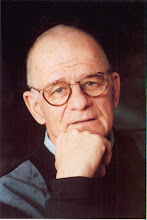Building Brands Online: A Contrarian View and a Wal-Mat Whopper
I’ve never felt comfortable with specious arguments, pseudo-science and voodoo-thinking that has sought to prove that brands can be built online with the same speed and depth of feeling as occurred in “old” media—or, as I call it, “legacy media.”
I agree that a brand should have roughly the same message wherever consumers touch it: in advertising, through customer-service, on a website or when they meet a brand at an event or in the social media jungle now growing up around Facebook and Twitter. But merely giving the consumer a clean, honest interaction – even if it leads to a sale—isn’t the same as engaging consumers and connecting them to the brand, long-term.
Or at least I’m skeptical of that claim.
Now the Interactive Advertising Bureau and Bain & Co. have combined to produce a report, based on an in-depth survey of 700 brand marketers, that shows most online sales organizations have lacked the “sophistication” to turn perceptions and encounters into real brand building as opposed to direct response transactions or sales.
This must have been a hard report to release for the IAB, which has argued for years that the Web is a premium brand building territory. But Randall Rothenberg, the IAB president and a trusted writer and editor who toiled on the edges of the industry back in the legacy heyday of the ‘80s and ‘90s, said that most brands are missing the opportunity for “engagement” and other interactions that will create long-lasting bonds with consumers.
So this segues nicely into a solid analytical piece from Adweek by Brian Morrissey on how brands have to be more careful in cracking the code to becoming a treasured iPhone App.
“Many brands have tested its waters,” he writes. “[But] brands face an uphill battle getting noticed in the iTunes App Store.” And even when they do, it’s amazing how many of them stumble into the trap that they are creating their own media properties, according to Eric Litman, CEO of Medialets, an iPhone analytics ad platform.
Says Ken Wilner, CEO of Zumodi, brands that hire an outside developer and end up with nothing more than a glorified ad are kidding themselves if they think they have built a meaningful connection with consumers. “There are a lot of snow globes and novelty-type ideas [in the Apps space]. They don’t sustain usage,” says Wilner.
Morrissey singles out Amazon Mobile; Bank of America; Kraft; The North Face; Virgin Atlantic; Volkswagen; and Pizza Hut, as brands which best delivered the critical value of “utility.” MasterCard’s Priceless Picks; Budweiser’s Bud American Ale Finder; Puma’s Puma Index; Burger King’s Burger King Now; and General Motors’s GM Mobile were among the Apps he tags as having missed the real opportunity in this space.
It seems to me a no-brainer what can be done with Apps. If I’m looking to book a flight, some airline should give me easy access to what they charge on that route—and if appropriate, what the competition is charging—and what are the times. That’s utility. But what happens if you’re Coca-Cola? Then I think Coke should help me get involved with some of the great events they sponsor—like the Winter Olympics—or just do something that is obviously fun and, if possible, refreshing in its wit, so at least the brand’s “tone of voice” and core message is maintained.
Footnote: Wal-Mart gets caught in one big fib.
Wal-Mart makes the claim in its advertising (out of The Martin Agency, Richmond, VA.) that the “average family” will save more than $3,000 a year shopping at Wal-Mart.
It turns out, according to a report from “Marketplace” on National Public Radio, this calculation is based on a study by IHS Global Insight. But what it doesn’t say is that the IHS study showed the “average family” would have to spend more than $83,000 a year shopping to achieve such savings. And that a family earning closer to the national average of $51,000 would only save $640 a year.
Furthermore, in making its claim, Wal-Mart is taking advantage of the way it screws down manufacturers to the lowest possible price point, creating a “floor price” that competitors (Target, Home Depot, Amazon, etc.) then have to meet. According to Charles Fishman, author of the book, ‘The Wal-Mart Effect,” “the headline number is technically accurate but misleading.”
Getting Wal-Mart to tell the truth has, historically, been a problem. But the brand is supposed to have mended its evil ways, under the watchful eye of Richard Edelman and his PR gnomes—who for a time, reportedly took in a hefty $10 million fee. Having paid that kind of penalty to rejoin the family of “civilized” brands—it would be a shame if Wal-Mart started getting slimey again. Come on, Wal-Mart, make an honest connection with consumers that stands the test of time.###

